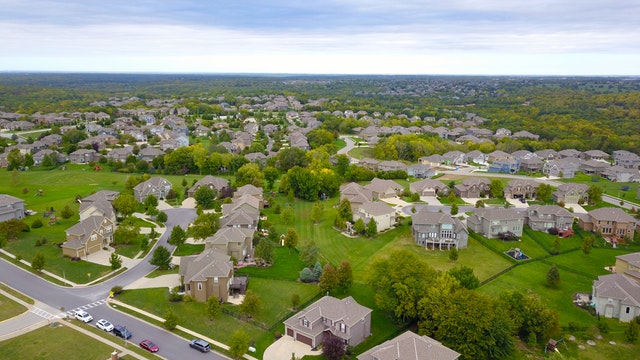 It is important for everyone to diversify their investments and one of the assets that people often look toward is real estate. In a healthy market, real estate should appreciate in value.
It is important for everyone to diversify their investments and one of the assets that people often look toward is real estate. In a healthy market, real estate should appreciate in value.
It is often less risky than investing in individual stocks and can provide a much higher return on investment than a typical bank savings account or even a money market account. On the other hand, people often think that they require a large amount of money to even think about investing in real estate. This is not always the case.
Buying Property Outright
One of the most straightforward ways to get started in the real estate investing market is to buy property outright in an area that is set to appreciate in value. Then, people can rent the property out to tenants as a way to generate a steady stream of income. This is why many people think that they need a large amount of money. Buying property is expensive and purchasing buildings in cash can be prohibitively expensive. Fortunately, there are other ways.
Joining A Real Estate Partnership
Another option is to join a real estate partnership. In a partnership structure, the various members pool their money together to buy large buildings. These buildings might even include individual apartments that can be rented out. Joining a real estate partnership is a more feasible option to get started in the real estate investing market. People might even be able to join for as little as a few thousand dollars.
Buying Shares
Finally, there are real estate crowdfunding partnerships popping up as well. Joining a real estate crowdfunding group is similar to buying shares of a company in the stock market. This offers an opportunity for people to get involved in the real estate market for an even lower cost. This is becoming a more popular option across the United States.
Invest In Real Estate
In the end, people do not necessarily require a large amount of money to invest in real estate if they know where to look and who to ask. There are plenty of ways to get started in the real estate investing market.
If you are in the market for a new property, be sure to consult with your trusted real estate professional.
 College is expensive and everyone needs to think about how they are going to cover the costs. Some of the costs include tuition, room and board, meals, books, and spending money.
College is expensive and everyone needs to think about how they are going to cover the costs. Some of the costs include tuition, room and board, meals, books, and spending money. Last week’s economic reports included readings on inflation and retail sales; the Federal Reserve released its post-meeting statement from its Federal Open Market Committee. Weekly readings on mortgage rates and new jobless claims were also released.
Last week’s economic reports included readings on inflation and retail sales; the Federal Reserve released its post-meeting statement from its Federal Open Market Committee. Weekly readings on mortgage rates and new jobless claims were also released. Have you ever seen a scientific experiment with things growing in a Petri dish? This is a metaphor for how neighborhoods grow as well. Things in a Petri dish grow towards the areas that have more nutrition to attract them and repel from areas that have bad things that they do not want.
Have you ever seen a scientific experiment with things growing in a Petri dish? This is a metaphor for how neighborhoods grow as well. Things in a Petri dish grow towards the areas that have more nutrition to attract them and repel from areas that have bad things that they do not want. The Federal Open Market Committee of the Federal Reserve announced its unanimous decision not to change to the current target federal funds range of 1.50 to 1.75 percent. The committee’s customary post-meeting statement said the decision not to change the Fed’s target range for federal funds was based on factors including a strong labor market, moderate economic growth, continued job growth, and low unemployment.
The Federal Open Market Committee of the Federal Reserve announced its unanimous decision not to change to the current target federal funds range of 1.50 to 1.75 percent. The committee’s customary post-meeting statement said the decision not to change the Fed’s target range for federal funds was based on factors including a strong labor market, moderate economic growth, continued job growth, and low unemployment. “Baby Boomers,” defined as people who were born between 1946-1964, are the wealthiest generation to ever retire, as well as the largest. According to U.S. Census Bureau projections, the population of people 65 and older will increase by 36% between 2013-2023 and is expected to outnumber children by 2034 — for the first time in U.S. history.
“Baby Boomers,” defined as people who were born between 1946-1964, are the wealthiest generation to ever retire, as well as the largest. According to U.S. Census Bureau projections, the population of people 65 and older will increase by 36% between 2013-2023 and is expected to outnumber children by 2034 — for the first time in U.S. history.